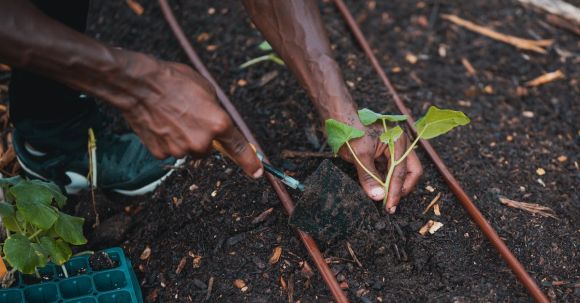Soil fertility plays a crucial role in ensuring sustainable crop production and food security. However, due to intensive farming practices, improper land management, and environmental degradation, many agricultural soils have become depleted and less productive over time. To address this issue, farmers and researchers are exploring various solutions to enhance soil fertility and promote sustainable crop production. In this article, we will discuss some effective strategies and techniques to improve soil fertility.
Cover Crops: A Natural Solution
Cover crops are non-cash crops that are planted primarily to improve soil health and fertility. They are known for their ability to suppress weeds, prevent erosion, and increase organic matter content in the soil. Leguminous cover crops, such as clover and vetch, have the additional benefit of fixing nitrogen from the atmosphere and making it available to other plants. By incorporating cover crops into crop rotation systems, farmers can replenish nutrients, improve soil structure, and reduce the need for synthetic fertilizers.
Composting: Recycling Organic Waste
Composting is a simple and effective method of recycling organic waste and converting it into nutrient-rich soil amendments. By combining various organic materials such as crop residues, animal manures, and kitchen scraps, farmers can create a compost pile that undergoes decomposition. The end product, known as compost, is a dark, crumbly substance that improves soil structure, water-holding capacity, and nutrient availability. Additionally, composting helps to reduce greenhouse gas emissions and minimize the need for chemical fertilizers, making it an environmentally friendly practice.
Crop Rotation: Breaking the Cycle
Continuous planting of the same crop in a field can lead to the depletion of specific nutrients and the buildup of pests and diseases. Crop rotation is a technique that involves alternating the type of crops grown in a particular area over several seasons. By rotating crops with different nutrient requirements and pest vulnerabilities, farmers can break the cycle of soil depletion and reduce the risk of pest outbreaks. This practice promotes biodiversity, improves soil fertility, and enhances the overall health of the agroecosystem.
Conservation Tillage: Preserving Soil Structure
Traditional tillage practices, which involve plowing and turning over the soil, can lead to soil erosion, nutrient loss, and compaction. Conservation tillage techniques, such as minimum tillage and no-till farming, aim to minimize soil disturbance and maintain soil structure. By leaving crop residues on the soil surface, conservation tillage helps to reduce erosion, increase organic matter content, and improve water infiltration. It also promotes the growth of soil microorganisms, which play a vital role in nutrient cycling and soil fertility.
Precision Farming: Optimizing Resource Use
Precision farming, also known as site-specific farming, utilizes advanced technologies to optimize the use of resources and improve crop productivity. By collecting data through remote sensing, soil sampling, and GPS technology, farmers can precisely assess the nutrient status of their fields and apply fertilizers accordingly. This targeted approach reduces excess fertilizer application, minimizes nutrient leaching, and improves the overall efficiency of nutrient uptake by plants. Precision farming also enables farmers to monitor soil moisture levels, irrigation needs, and plant health, leading to better resource management and higher crop yields.
In conclusion, enhancing soil fertility is essential for sustainable crop production. By implementing strategies such as cover cropping, composting, crop rotation, conservation tillage, and precision farming, farmers can improve soil health, increase crop yields, and reduce environmental impacts. These practices not only promote sustainable agriculture but also contribute to food security and the preservation of our natural resources. By prioritizing soil fertility, we can ensure the long-term viability of our agricultural systems and pave the way for a more sustainable future.
